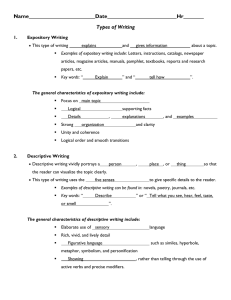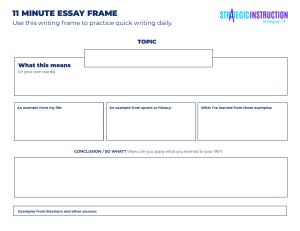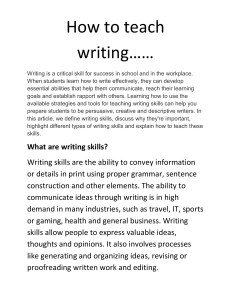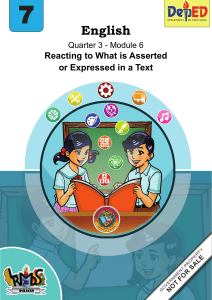Author's Purpose: Narrative, Descriptive, Expository, Persuasive
advertisement
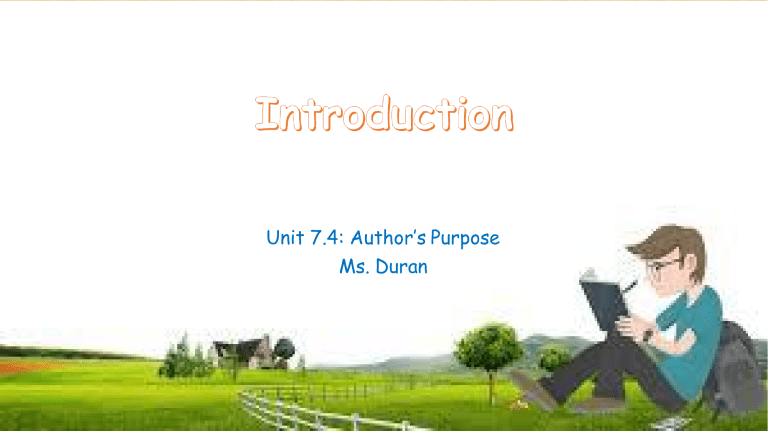
Unit 7.4: Author’s Purpose Ms. Duran Understand and identify the different purposes of a text. A1. Distinguish an author’s purpose by analyzing the text. A2. Determine the meaning of words to distinguish and write text in the four types of author’s purpose: descriptive, narrative, expository, and persuasive writing. A3. Describe an event through figurative and sensory language to show the reader what is happening rather than telling them directly. A4. Take a position, summarize an issue, support a position with facts, use persuasive language and to suggest solutions to a problem through persuasive writing. An author’s purpose is his/her reason for writing. It is reflected in the way the author writes about a topic. For instance, if the author’s purpose is to amuse, he/she will use jokes or anecdotes in the writing. Clues to an author’s purpose may be found in titles, prefaces, and the author’s background. Narrative Writing 1. Used to relate a story or to recount events. 2. Has a beginning, middle, and ending. 3. A story may have a lesson, but the author’s main purpose is to entertain. Examples Harry Potter books Poems about love Narrative essay about the big game Script for a TV show Descriptive Writing 1. 2. 3. 4. It tells what something looks like, sounds like, or feels like. It often involves the 5 senses. Describes a person, event or place. It uses many details about the topic. Examples: Product description Travel brochure Letters Journal or diary entries Persuasive Writing 1. It is used to convince a reader to believe an idea or to take a course of action. 2. Attempts to influence the reader. 3. Usually makes an argument. Examples: Political speeches Advertisements An essay urging readers to recycle Expository Writing 1. It is used to inform or teach the reader. 2. Expository writing shows or explains facts. Examples: Biography of Barack Obama News report about a shooting Note to a friend Essay about “killer bees” Remember: Expository = Expose

